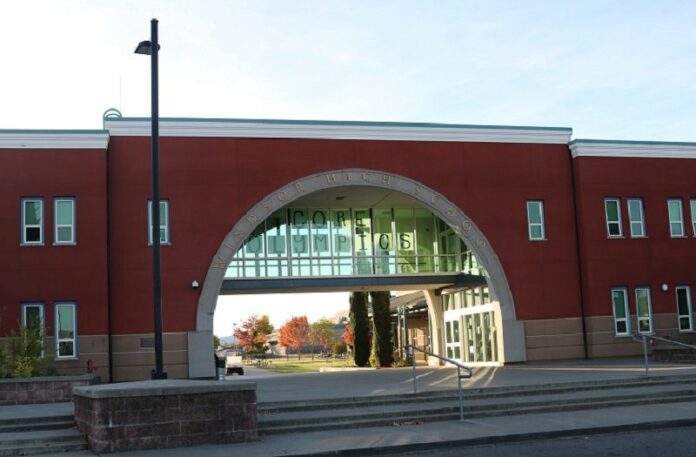The big conversation of the Windsor Unified School District board meeting on June 29 was around math placement and performance at Windsor High School (WHS). According to incoming principal Brian Williams, there are a number of concerning statistics and issues that need to be considered.
While 92% of all WHS students are enrolled in math, including 94% of all juniors and 72% of all seniors, the high percentage of juniors and seniors enrolled in math does not mean that most students are pursuing Math III, Trig/Pre-Calc, AP Calc or AP Stats. Instead, it reflects the high percentage of students who have to repeat Math I and Math II to meet the graduation requirement.
The statistics also show a concerning racial disparity in performance in math. While 48% of students attending WHS identify as Hispanic/Latinx and 46% of students attending WHS identify as white, there is disproportionate number of Hispanic/Latinx students enrolled in Math I and a disproportionate number of white students enrolled in Math II and Math III. According to Williams, this is due to the high failure rate in Math I (particularly among Hispanic/Latinx students), which causes students to repeat the course and inflate the enrollment numbers.
“The high failure rate in Math I and Math II impact a student’s ability to access Math III — only 37% of Math III students identify as Hispanic/Latinx, but they represent 48% of the population. The high failure rate by Hispanic/Latinx students in Math I (72%) is disproportionate to their representation in the total population (48%),” Williams said in his presentation.
Williams also had two additional, concerning statistics. “I think it’s important to see these scores for several years to see this fall 2020 scores are not because of COVID, and another startling statistic is the D/F percentage by ethnicity. Only 37% of our Hispanic and Latinx student make it through the A through G requirements (which are necessary for CSU acceptance),” he said.
There is also a financial consideration to the high number of students having to repeat those courses.
“When we receive funding for a student in a class, we get funding for one time,” Williams said. “We don’t get additional funding if they repeat the course, and we have to use supplemental funding for students to occupy that seat. In addition, we may have to hire additional teachers as those sections fill with repeat students.”
To help solve some of these issues, Williams is proposing a new academic pathway that includes the addition of Pre-Math (Math 8) in ninth grade to help students prepare for Math I in 10th grade, the continuation of Math I support classes, the addition of Math II support classes, the implementation of standards-based grading to help identify levels of competency and mitigate “toxic” grading practices and the identification of competency standards between Mat h6 and Integrated Math III.
“Previously they’d take Math 1, failed, and they’d try again, or they’d take math 1A as a freshman, and be given half the curriculum and taking 1B in sophomore year, but every solution takes them two years to get the requirements done,” Williams said. “The solution I’m proposing meets California graduation requirements that says students have to have two years of math with highest year equivalent to Math 1. This way, if WUSD aligns with California’s graduation requirements, it could help some students — not those going A through G or those planning on AP or Math III — but those who are struggling through process.”
Board vice president Rich Carnation wanted better explanation of the concept of toxic grading practices, and how Williams plans to manage them.
“One thing to think about is if you are adding concept of effort into a grade you are not grading on competency, its’ effort,” Williams said. “A student could demonstrate they have full mastery but are missing assignments and they could fail the course. We’re looking at ways to determine students have mastery of content and still be able to communicate that work products and having good habits is important.”
66.3
F
Healdsburg
May 28, 2025










